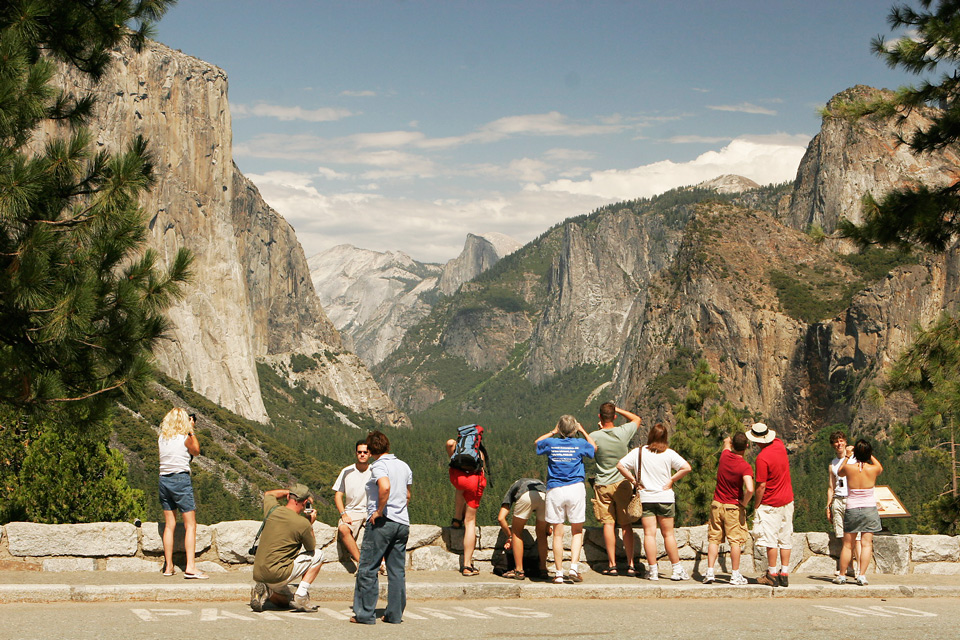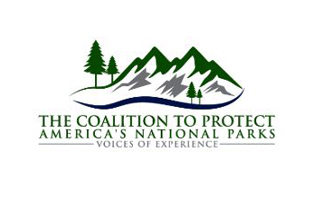
Yosemite National Park
Sierra Sun Times file photo
August 5, 2019 - Coalition to Protect America’s National Parks comments on potential National Park Service E-Bikes Policy:
July 30, 2019
Mr. P. Daniel Smith, Acting Director
National Park Service, 1849 C Street NW
Washington, DC 20240
Subject: National Park Service E-Bike (Electric Bicycle) Policy
Dear Mr. Smith:

Several of our members recently heard that NPS has been working on a policy regarding the use of e-bikes in units of the National Park System (parks). The increasing popularity of e-bikes is of concern to our membership. We, therefore, offer the following comments regarding what we consider to be appropriate principles to incorporate into the pending NPS e-bike policy.
1) Under existing NPS regulations, e-bikes clearly meet the definition of a “motor vehicle” and should be managed as such – 36 CFR §1.4 states: “Motor vehicle means every vehicle that is self-propelled and every vehicle that is propelled by electric power(emphasis added), but not operated on rails or upon water, except a snowmobile and a motorized wheelchair.” Based on this definition, we see no appropriate way for NPS to manage e-bikes the same as human-powered bicycles (such as allowing the same pathway and trail access, etc.) short of rulemaking to amend the definition in the CFR. It is worth noting that both the Bureau of Land Management (BLM)[1]and U.S. Forest Service (USFS)[2]have approved existing policies that also manage e-bikes as “motor vehicles” based on each agency’s respective CFR definition of the term. We recommend the USFS e-bike policy as a good model for NPS to consider as you develop e-bike policy for the National Park Service. And as the popularity of e-bikes increases and pressure inevitably mounts to open park bike trails to e-bike users, we strongly encourage NPS to coordinate closely with BLM and USFS, so that any substantive changes in the respective e-bike policies are reasonably aligned with laws and policies that guide the respective federal land management agencies.
2) E-bikes do NOT meet the existing definition of a “mobility device” under applicable regulations and statutes– Of course, we might expect that e-bike proponents and manufacturers will portray e-bikes as a mobility aid or assistive device for people who are mobility impaired (i.e., similar to a motorized wheelchair). However, current NPS regulations clearly preclude NPS adoption of suchan interpretation within parks. 36 CFR §1.4 states: “Motorized wheelchair means a self-propelled wheeled device, designed solely for and used by a mobility-impaired person for locomotion, that is both capable of and suitable for use in indoor pedestrian areas.” In addition, the above NPS definition is consistent with the approach described in 42 U.S.C. Section 12207 (c)(1) which authorizes “the use of a wheelchair in a wilderness area by an individual whose disability requires use of a wheelchair”; and (c)(2) which states “the term ‘wheelchair’ means a device designed solely for use by a mobility-impaired person for locomotion, that is suitable for use in an indoor pedestrian area.” (emphasis added). In brief, e-bikes are neither designed SOLELY for use for locomotion by a mobility-impaired nor suitable for use in an INDOOR pedestrian area such as a park visitor center and, therefore, cannot be considered as a mobility device in the same vein as a motorized wheelchair.
3) Since e-bikes are a potential new recreational use in parks, as part of its policy development NPS should prepare an “appropriate use” analysis as described in NPS Management Policies 2006– Section 8.1.2 of the policies, Process for Determining Appropriate Uses, states, in part: “All proposals for park uses will be evaluated for: consistency with applicable laws, executive orders, regulations (emphasis added), and policies; consistency with existing plans for public use and resource management; actual and potential effects on park resources and values; total costs to the Service; and whether the public interest will be served.” As stated in comments #1 & 2 above, under 36 CFR §1.4, e-bikes clearly meet the NPS definition of “motor vehicle” and, therefore, must be managed as such; and similarly e-bikes do NOT meet the definition of a motorized wheelchair (or similar mobility device) and, therefore, cannot be allowed the same access as a motorized wheelchair.
4) There is the potential for adverse impacts, such as user conflicts, if e-bikes were to be allowed the same access in parks as human-powered bicycles– A cursory review of numerous internet articles on the pros and cons of e-bikes reveals strong public opinion both in support of and opposed to the use of e-bikes on bike trails on public lands. In brief, there are many opinions, but very little research or hard data, describing the actual impacts of e-bikes on trails and pathways currently used exclusively by bicycles and pedestrians. If NPS is considering allowing greater recreational access to e-bikes in parks, then NPS should prepare an impact analysis in accordance with the National Environmental Policy Act (NEPA) and allow public participation in that process.
In closing, under current NPS regulations,e-bikes must be considered and managed in parks as motor vehicles rather than allowed the same off-road access (i.e., on pathways and trails) open to human-powered bicycles. Any significant deviation from that would require NPS to go through rulemaking and NEPA.
Thank you for considering of our comments on this important issue.
Sincerely,
Philip A. Francis, Jr., Chair
 https://protectnps.org/wp-content/uploads/2019/01/phil-francis-signature.jpg 452w" sizes="(max-width: 200px) 100vw, 200px" style="box-sizing: border-box; border: 0px; height: auto; max-width: 100%; display: inline; float: left; margin-right: 1.5em;">
https://protectnps.org/wp-content/uploads/2019/01/phil-francis-signature.jpg 452w" sizes="(max-width: 200px) 100vw, 200px" style="box-sizing: border-box; border: 0px; height: auto; max-width: 100%; display: inline; float: left; margin-right: 1.5em;">
Coalition to Protect America’s National Parks
201 I Street, NE #805, Washington, DC 20002
cc: Alma Ripps, Chief, Office of Policy, National Park Service
[1]https://www.blm.gov/policy/ib-2015-060
[2]https://peopleforbikes.org/wp-content/uploads/2017/10/20160324ElectricBikesAndTrailManagement_final-Fed-2016-1.pdf
Source: Coalition to Protect America’s National Parks








